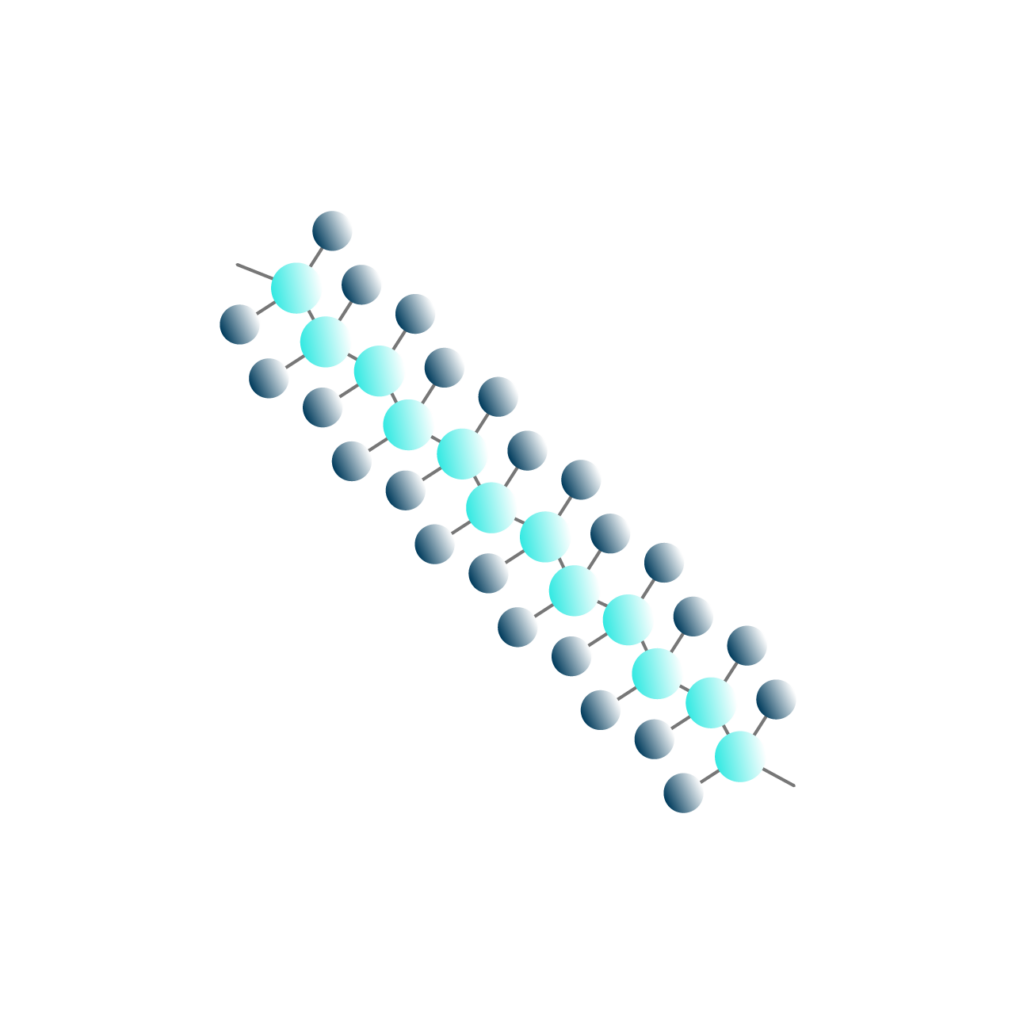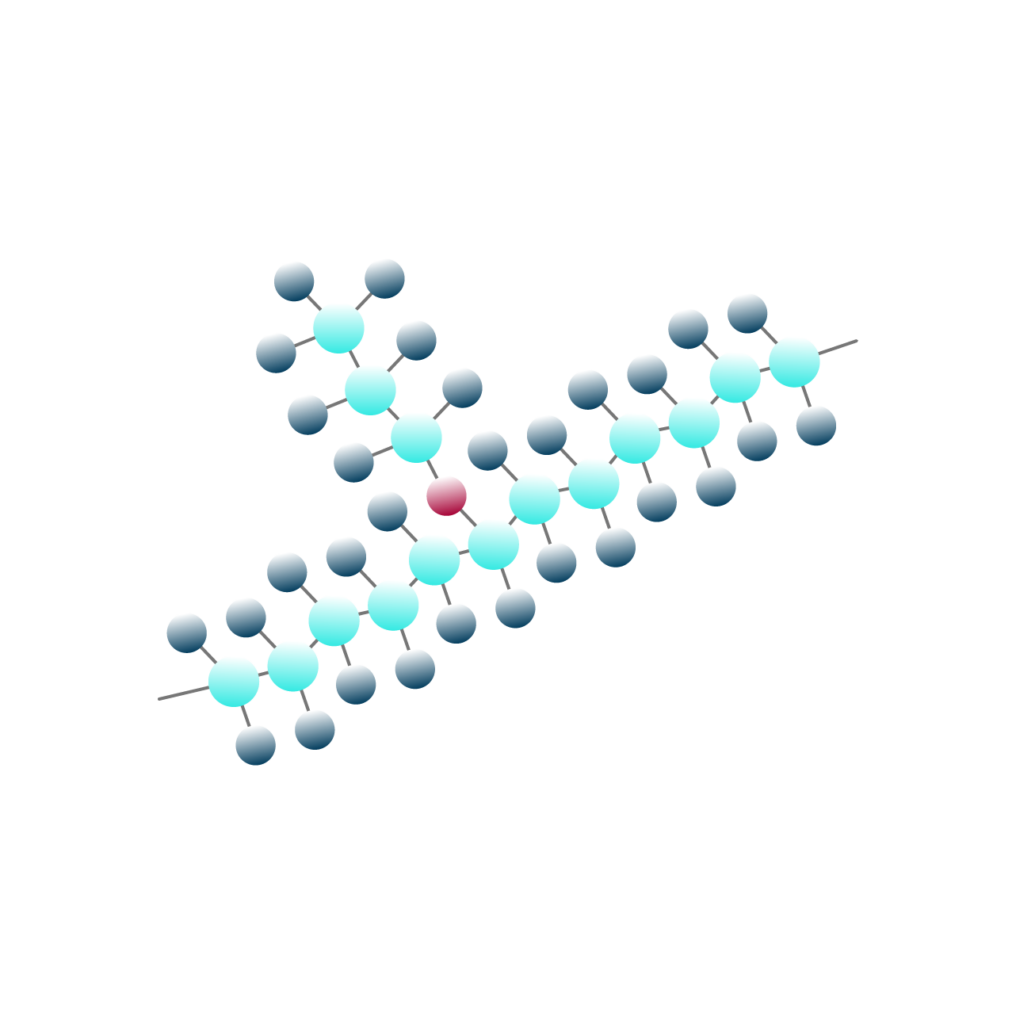Material
Polytetrafluorethylen – PTFE – is a polymer of tetrafluorethylene. It is a partially crystalline fluorocarbon with a high level of fluorination. The strength of its carbon-fluorine bonds make it extremely resistant to almost all organic and inorganic chemicals. In addition to being suitable for use across a wide temperature range and having an extremely low friction coefficient, this is the main factor that makes PTFE the most frequently used fluorocarbon. It is now an integral part of every sector of our economy.
Polytetrafluorethylene was discovered by accident in 1938. When conducting research for Du Pont, Dr. Roy Plunkett noticed a waxy white powder in his pressure bottle while he was attempting to synthesize an odorless, non-combustible and non-poisonous coolant from tetrafluoroethylene (TFE). Analysis showed that this was polytetrafluorethylene (PTFE), which had been formed due to a polymerization reaction. Such were the humble beginnings of the worldwide success story which unfolded under the Teflon® trademark.
Our company prepares and processes pure (virginal) PTFE under the name NUE 1.
Its properties are:
- capable of resisting temperatures between -200°C and +260°C
- good electrical insulating properties
- low friction coefficient, no stick-slip effect
- marked anti-adhesive properties
- physiologically safe (conforms with FDA and BfR requirements)
- outstanding weather and aging resistance
- no water absorption
- low levels of thermal conductivity
- excellent fire resistance (UL 94 (at 1.5 mm): VO, LOI index: 95 %)
- PTFE can be used in a vacuum
The drawbacks of pure PTFE include:
- relatively low wear resistance, PTFE compounds should be used if required
- tendency towards cold flow
- low resistance to high energy radiation, polymer properties change from doses of 10 kGy upwards
- poor adhesive properties
- cannot be used in injection molding

Chemically modified (virginal) PTFE – NUE M 1 – significantly enhances the positive properties of NUE 1 by incorporating a modifier into the polymer chain
- lower tendency towards cold flow (deformation under load)
- tighter, less porous structures
- improved resilience
- improved performance during welding
- smoother surfaces and higher transparency
Specially modified material types also allow components to better resist dynamic pressure and creep loads. We are happy to help!

PTFE compounds are created by mixing fillers into the PTFE base polymer. The purpose of doing this is to optimize material properties for specific applications. Fillers are primarily used to:
- reduce cold flow (deformation under load)
- increase wear resistance
- increase electrical and thermal conductivity, and
- reduce thermal expansion
PTFE materials can also be colored by incorporating special pigments. This can be done to visually distinguish between similar parts or for marketing purposes.
Characteristics
Filler material
| GLASS | CARBON | BRONZE | GRAPHITE | |
| density | • | ⚬ | • | ⚬ |
| Tensile strength | ⚬ | ⚬ | ⚬ | ⚬ |
| Tensile strain | ⚬ | ⚬ | ⚬ | ⚬ |
| break | • | • | • | • |
| compression strength / deformity under stress load | • | • | • | • |
| Resistance to wear and tear | • | • | • | • |
| Coefficient of friction | • | • | • | • |
| Thermal expansion | ⚬ | ⚬ | ⚬ | ⚬ |
| Temperature area of applic. | ⚬ | ⚬ | ⚬ | ⚬ |
| Thermal conductivity | ⚬ | • | • | • |
| Electrical conductivity | ⚬ | • | • | • |
| Dielectric strength | ⚬ | ⚬ | ⚬ | ⚬ |
| Porosity | • | • | • | • |
| Resistance to chemicals | ⚬ | ⚬ | ⚬ | ⚬ |
| • increased | ⚬ reduced | ⚬ unchanged | ||